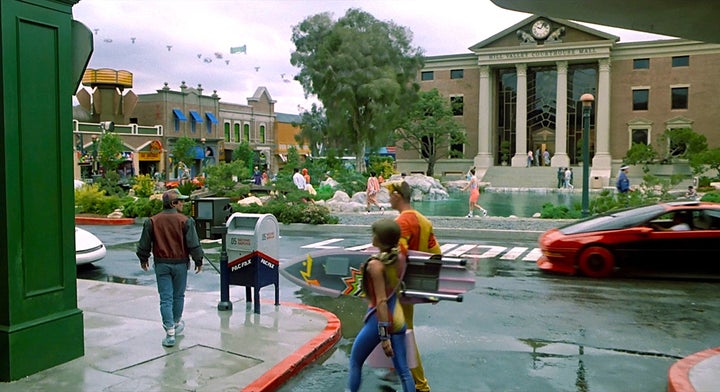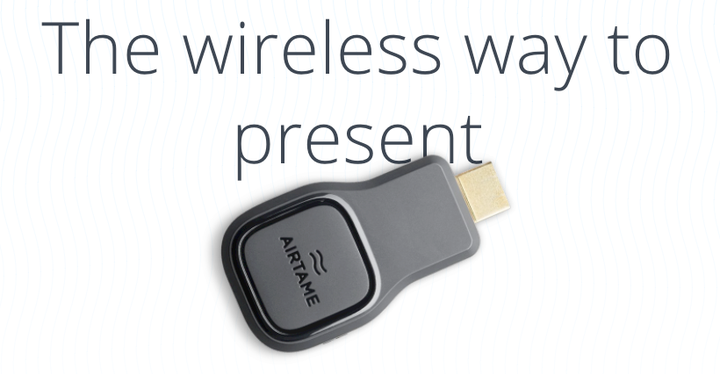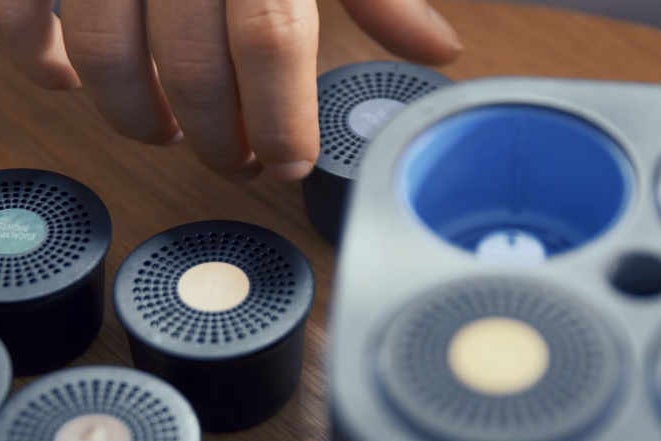
I was one of those Back to the Future kids who has always dreamed about hoverboards and flying cars and everything else we were promised in movies from 20 to 30 years ago. When you think about it, 20 to30 years is actually a great timeframe for tech predictions. It’s far enough in the future that you can imagine tech developments that are interesting, but still close enough that there’s a chance you’ll get things right.
Predictions looking farther down the road than that, such as the ones you’ll find in Star Trek, are too distant from our own lives to be truly tempting. But 20 years from now most of us will still be around to enjoy that future technology, if it comes to pass.
Actually, Back to the Future II is often held up as an example of a movie in which tech predictions actually came true. Sure, we don’t have flying cars, hoverboards, or instantly hydrated pizzas, but we do have flat TVs, video conference calls, and smart door locks. It also might not be too late for flying cars, there are a number of companies already working on vehicles in this category.
In fact, according to Gerd Leonhard, a world-renowned futurist, who happened to write a blurb for my book, Digital Sense, says, “Humanity will change more in the next 20 years, than in the previous 300.”
Whoa.
Beyond that, there’s a host of other technologies that are maturing right now that we only dreamed about in the past. We’ve got smart AI technologies that we can talk to like Alexa, Google Now, Cortana, and Siri, cars that drive themselves, and automated smart homes that can set their own temperature and mood lighting depending on the weather.
Here’s a look at 14 companies that prove that the future we live in is absolutely fantastic.
1) Airtame

Cables, cables everywhere; it’s an unfortunate part of modern life but all of our devices need power and connections. Fortunately, there are technologies being rolled out to resolve this. Airtame is one such solution that’s trying to tackle the problems caused by the necessity of cables for high-definition video streaming to your TV. It’s a small wireless HDMI dongle that connects to any screen or monitor for wireless casting and streaming of media. Airtame is similar to iOS Airplay.
Airtame first launched through a crowdfunding campaign on Indiegogo raising nearly 800 percent of their initial goal, which made it the most successful European crowdfunding campaign at the time.
2) Beyond Verbal
We are all used to the idea of talking to technology, such as giving commands to AI devices. However, our voices can do much more than simply serve as a user interface. That’s where Beyond Verbal steps in; by focusing on voice-driven Emotions Analytics and listening to the tonality of the human voice, the company aims to revolutionize the way our health is monitored.
The company has already proven that vocal intonation can provide significant insight into the physical health of human beings; In partnership with the Mayo Clinic, Beyond Verbal recently found a significant connection between vocal biomarkers and Coronary Artery Disease. This means that medical professionals and researchers might be able to reveal health risks just by listening to our voices using Beyond Verbal’s technology, and take early action with preventative medicine.
That’s amazing! Can you hear me now?
3) Arbe Robotics

Drones are one of the technologies that people didn’t see coming. These small, flying robots are opening up all kinds of new possibilities that will change multiple industries. And if the drone light show that accompanied Lady Gaga during the Super Bowl Halftime Show powered by Intel is any indication, we are only going to see more of them.
Arbe Robotics is a startup that’s pioneering the use of automated imaging radar in the emerging market of drones. The company has built an economical and power-efficient collision avoidance technology that can view 360 degrees around the drone for up to 1250 meters. The product includes hardware and software components that help drone operators detect and avoid upcoming obstacles. This technology may also prove to be useful for automated cars.
4) Amimon
While on the subject of drones, it needs to be said that these nimble aerial devices are becoming the next big racing sport. If Drone Racing wasn’t in your vocabulary as a kid, then you’re not alone. This is one of those developments that no one expected and yet would completely amaze anyone from even five years ago.
Amimon is one company making things happen in the space. The company has built zero latency wireless HD video and uses this technology in the recently unveiled FALCORE, a sleek new racing drone designed for pilots of all experience levels. The video technology allows pilots to achieve a zero-latency pilot point of view in the drone, which is critical to effective racing. The drone can also be flown directly out of the box with its patented “Shield Mode” which automatically maintains a fixed distance above ground. This allows pilots to fly close to the ground without needing to maintain altitude manually.
It’s like pod-racing from Star Wars Episode 1, but without the bad plotline or Jar Jar Binks.
5) Humavox

As described above, cables are needed to operate many of our futuristic devices, and that sucks! Most of us have seen or sampled wireless chargers for our phones, such as charging mats or pads, that are supposed to solve this problem. But most of these solutions still don’t really allow us to detach from cables and cords entirely. Humavox, however, wants to completely restructure the wireless experience by allowing us to truly cut the cord.
Humavox uses radio-frequency (RF) wireless technology that allows us to charge wireless devices by dropping them into any compatible 3D container, such as a bowl, case, or purse regardless of placement. With this technology, we will be able to seamlessly blend chargers into our lifestyles without giving it any extra thought.
6) Inception
VR has actually been around for a long time, the one caveat being that it didn’t work very well in the past. That’s all changing, and fast. While VR has made enormous developments in recent years in the gaming industry, we have yet to see this success cross over into entertainment.
Inception, a creator of original immersive virtual reality content, is aiming to become “the Netflix of VR” by serving as a leading destination for pure VR entertainment. The platform already delivers entertainment content across different verticals such as musicals, with a VR inside tour with TimeOut London of Wicked the musical; to arts, with a virtual interactive museum exhibit of the Dali Theatre-Museum. Inception is creating VR formats that will allow you to browse through endless VR content and watch it in the same way you watch your favorite Netflix series - except up close and personal.
Take my money already!!
7) InfinityAR

Augmented Reality has been pegged as one of the top emerging technologies. In fact, Apple CEO Tim Cook has repeatedly mentioned AR as an area of interest for the company, and Microsoft has made a lot of noise about it with its HoloLens as well. One company taking a different approach is Infinity Augmented Reality, which is developing a software-based AR engine. InfinityAR’s approach is a bit different because it relies on two simple video cameras to understand the 3D nature of the real world, and then map virtual objects on top of it.
In addition, the company is planning to partner with manufacturers to build its software AR engine into these devices. With its recently raised $15 million in funding from Chinese retail giant, Alibaba - which was Alibaba’s biggest investment to date in an Israeli company - the InfinityAR is creating a new and futuristic digital environment that will allow people to naturally interact with augmented content in their physical surroundings.
8) BreezoMeter
Big data is has been a big buzzword for awhile. But how do you make sense of big data? BreezoMeter is trying to do just that with public air. Breezometer collects, measures and analyzes public air quality information from sensors around the world and provides proprietary real-time and historical street-level data and guidance to some of the world’s largest companies. BreezoMeter was named by the White House’s Global Entrepreneurship Week as 2014's "Most Promising Startup" worldwide. It was also named by the Journeys Conference as one of Israel’s top ten technology companies. Finally, it was named by i3 as one of the 2017 Global Cleantech 100. BreezoMeter’s customers and resellers include Dyson, GE, Cisco, Motorola Solutions, Accuweather, Eureka Forbes and others.
You smell that?
9) Lumus
Lumus provides its unique display technology to consumer electronics and smart eyewear manufacturers worldwide. To date, it’s see-through wearable displays serve multiple AR vertical markets, including healthcare, manufacturing, logistics, avionics and, more recently, consumer products.
This technology has been developed across the past 16 years, and produces see-through performance that combines a wide field of view with the most compact, natural-looking eyewear. Its investors include HTC, Shanda Group, electronics manufacturer Quanta (Macbooks) and Crystal-Optech. Its current customers include DAQRI, Thales, and Atheer among others.
10) Wombat
Wombat sees itself as the antithesis to adTech and MarTech. Looking at existing solutions in the app engagement & growth market, they noticed that there was something fundamentally broken about it: app owners had to choose between taking an easy route for themselves, but sacrificing their user experience (think of the annoying, untimely popups asking you to rate an app), or try to deliver the perfect user experience, but spend all their time or resources doing so.
Wombat’s founding team thus challenged themselves to produce the easiest experience for the app owner, while still keeping a superb mobile user experience. The result is a platform inspired by Influence Psychology. Using universal rules and machine learning, it allows the app owner to simply copy and paste one line of Wombat code into their app, and then choose from a rich bank of pre-canned and self-optimizing interactions to activate.
11) Cloudinary

Dynamic image management is a must for marketers in the digital space. The only problem is that a single image may need literally dozens of iterations to appear the way it should across every browser, device, and viewport. Creating, managing, and maintaining these images for all of your web properties can be a resource-draining problem for your IT, marketing, and graphic design teams.
Fortunately, Cloudinary allows you to manage thousands of different image versions across all of your web properties simply, easily, and affordably. The result is images that always appear the way they should on every browser and device without drawbacks such as distortion or excessive loading times. It’s especially useful if your brand utilizes image-heavy websites.
12) prooV
How do you manage and validate innovation? prooV has developed an end-to-end platform to help startups and enterprises run effective proof of concepts (PoCs). prooV handles the discovery, due diligence, testing, and deployment of successful PoCs to help startups struggling to validate their innovation, as well as investors who are seeking that validation. The company is working with hundreds of enterprises and thousands of startups across the globe to eliminate the headache of creating an effective PoC and make getting proof as painless and simple as possible.
prooV is Voorp spelled backwards… which actually makes no sense.
13) WalkMe
Walkme is a web-based service that helps users navigate the features of other web-based services. It has developed a platform to enhance user experience across various types of software. It helps its clients by creating a user experience standard that is both familiar and intuitive for the end user. It claims that it can INSTANTLY improve their client’s user experience.
14) Moodo

We’ve been waiting for our homes to get smart for a long time. Well thanks to IoT devices like smart lights and thermostats, now they are. But those pertain to only a few of our senses. What about smell?
Enter Moodo, a customizable IoT scent mixing system recently launched on Indiegogo to complete the expanding smart home market; think Keurig, but for smells. Moodo is ditching old school home scent options such candles and plug-ins to infuse our lives with wireless, interconnected smell-good technology. Moodo offers multiple fragrance capsules that can be loaded into the device and mixed together to create a limitless number of fragrance options.
He who smelt it, dealt it!
Nope. It was Moodo!
These companies are just a glimpse into the amazing things happening in technology. And ok, ok. Not all of them are super space-agey, but they are fascinating and a testament to innovation.
The only question that remains is how quickly these technologies will become an everyday part of our lives.
